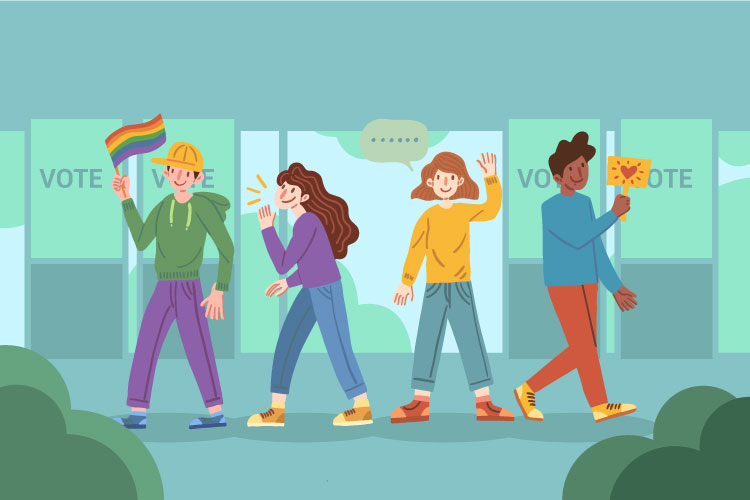Student Unions Collective Actions for Social Support and Political Transition
Author: Shambhu Parshad Bhatta

Nepal has experienced a tumultuous socio-political history marked by various political movements. Nepal’s democratic movement 1951, People’s Movement 1990, People’s Movement II, followed by establishment of federalism is unforgettable. People from different segments of society participated in this movement wholeheartedly to bring political and democratic reforms within the country. In this, apart from political parties and their leaders, student unions played as a catalyst in the advancement of the political transition in Nepal. Their involvement has changed the directions of the political movement including energy and visibility of the movements to guarantee political goals, guarantee democratic norms, and uphold human rights values.
Unfolding history, student movement in Nepal began after Jayatu Sanskritam movement against the Rana Regime in 1947 AD, demanding inclusion of modern subjects in curriculum of Rajakiya Sanskrit Vidyalaya. The establishment of Tri-Chandra Campus in 1918 AD, a door to modern education, which further sensitized the student movement to support independence struggle against the autocratic Rana Regime. After independence in 1951 AD, student activism were more focused on social reforms, educational reforms and universities’ improvements.
Later on, the panchayat system a party-less political order where political parties officially were banned was landmarked for shifting the dynamic of student activism. This political turmoil shaped student union involvement as a powerful driving force against the panchayat system. In the absence of mainstream political parties, student organizations like Nepal Student Union (NSU) and All Nepal National Free Student Union (ANNFSU) came into existence to support political parties by organizing underground resistance movements against the panchayat system. Various street protests, sit-ins, strikes and demonstrations were carried out in different parts of the country. The fall of panchayat regime and restoration of democracy recognized that student unions’ power for political mobilization.
While transition from democracy to federalism in Nepal, various student union served in forefront of the 2006 People’s Movement II. Massive student protests and demonstrations was organized across the country, demanding the abolition of monarchy. Through these movements, it is noted that they not only spearheaded the resistance movement against the autocratic regime, but they also served as a connecting bridge between the people and political parties.
In post democracy, student unions were focused to voice for civil liberties and democratic rights of the people. Student unions affiliate to Nepali Congress, Communist Party of Nepal (Unified Marxist-Leninist), Unified Communist Party of Nepal (Maoist) have worked to amplify the voices of marginalized groups, ethnic minorities, and Indigenous communities and pushed the agenda of social inclusion and address historical discriminations. Even during the constitutional making process, student wings active participation in shaping the constitution and pressuring and advocating for the voices of grassroots people are praiseworthy.
Notably, student union were affluent in shaping public opinion, societal narratives, political landscape towards prioritizing peace and democratic governance. Student movements have taken on diverse roles, from advocating social justice, democratic reforms, human rights advocacy and campaign, environmental justice to political literacy and issues of broader socio-political fabric of the nation. During the environmental crisis period like the devastating earthquake in 2015, student unions coordinated with the government to rescue, provide relief and speed up rehabilitation efforts to the affected families in different parts of the earthquake impacted areas and communities. They have been instrumental during the earthquake rehabilitation and support program followed by various disasters prone incidents. Similarly, during covid also student’s unions were active in distributing health equipment’s, food and water to stranded people at borders and cities.
Therefore, student unions have contributed to the creation of a more cohesive and harmonious social fabric, essential for the long-term stability and prosperity of Nepal. Moreover, students have engaged in grassroots peacebuilding initiatives, working to heal the divisions within society and foster reconciliation among former adversaries. Despite appealing and inspirational history, legacy of student union and their movement is missing in post-federalism, hoping to regain its momentum as powerful driving force in new Nepal.
About the Author

Mr. Shambhu Parshad Bhatta is a Member of CPN UML history Department of Policy and Research Center.
